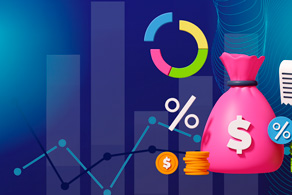The most profitable bonds with high coupon income
Bonds remain one of the most popular financial instruments among investors who seek to receive stable income with moderate risks.

Investors are attracted by the predictability of payments, the ability to know the amount and dates of coupon income in advance, and to return the par value upon the expiration of the bond.
Income from bonds consists of regular coupon payments and possible profit from reselling the bonds at a higher price.
However, high-coupon bonds often come with increased risks, so it is important to choose your issuers wisely, whether they are government or corporate bonds.
Government and corporate bonds: risk or stability?
When choosing between government and corporate bonds, investors must decide whether they are willing to accept increased risk for higher returns or prefer stability with moderate income.
| № | A country | Yield (%) local / USD | Issue currency | Credit rating | Risk of default |
|---|---|---|---|---|---|
| 1 | Türkiye | 42 / 9 | TRY/USD | BB– | High (>20%) |
| 2 | Argentina | 40 / 12 | ARS/USD | CCC and below | Extremely high (>30%) |
| 3 | Egypt | 27,5 / 10,6 | EGP/USD | B | High (>15%) |
| 4 | Brazil | 14 / 6,5 | BRL/USD | BB | Moderate (~5%) |
| 5 | New Zealand | 4,5 / — | NZD | AA+ | Very low (<0.5%) |
The most profitable government bonds are issued in developing countries. Their yields are extremely high, but the risks of default and economic instability are also an order of magnitude higher than in developed countries such as the United States or Europe.
It is important to pay attention to the currency in which the government bond is issued, since the exchange rates of national currencies in developing countries often fall.
Unlike government bonds, corporate bonds have good returns in US dollars. The most profitable corporate bonds (as of July 2025):
| № | Issuer / paper | Coupon (%) | Yield (YTM %) | Currency | Rating / type | Risk of default |
|---|---|---|---|---|---|---|
| 1 | Saturn Oil & Gas – 9.625% 2029 | 9.625 | ≈ 10.35 | USD | No (secure second lien) | Very high (>20%) |
| 2 | Carvana Co. – 14% notes 2031 | 14.0 | ≈ 6-14 (PIK, income depends on execution) | USD | No rating / PIK | Very high (>20%) |
| 3 | SP Group (India, private issue)** | 0 (zero coupon) | 19.75 (implicit) | INR (repayment in USD equivalent) | Unrated / private | Very high (>30%) |
| 4 | Other high-yield picks (BondSavvy)** | up to ~11.7 | up to ≈ 11.7 | USD | Junk / recommended | Very high (>20%) |
| 5 | (other private EM issues)** | ≈ >12 | ≈ 12–15+ | INR / USD / EM nat. | Unrated / private | Extremely high (>30%) |
If we talk about my choice, then at one time I bought bonds of the Canadian bank Royal Bank of Canada RY and bonds of the famous Pfizer Inc. Top 10 corporate bonds .
Bond trading in a professional trading platform
The highest yielding corporate bonds are typically issued by biotech and innovation companies. Their appeal lies in their high coupon yield, but at the same time they carry very high default risks, especially if the issuers do not have an investment grade credit rating.
What else should you pay attention to when choosing bonds?
When investing in high yield bonds, it is extremely important to evaluate not only the coupon rates, but also the financial stability of the issuers. The main criteria for evaluation are:

Financial health of the company : Check the company's financial statements: debt-to-equity ratio, profitability, liquidity, and cash flow stability. High debt levels may indicate a risk of non-payment of the coupon or the debt itself.
Credit rating : Rating agencies (S&P, Moody's, Fitch) provide an assessment of the issuer's creditworthiness. The lower the rating, the higher the yield, but also the higher the risk of default. In the absence of a rating, as in the case of the above biotech companies, the risks are especially high.
Probability of bankruptcy and default : Use metrics such as the Altman coefficient (Z-score) to assess the risk of a company going bankrupt. The higher the probability of default, the higher the risk premium reflected in the coupon rate.
How to buy securities online via the Internet
When choosing high-coupon bonds, an investor must clearly understand the risks involved. Government bonds of developing countries can provide very high returns, but carry huge risks of default. Corporate bonds of innovative and biotech companies offer high returns, but require careful analysis and readiness for significant financial losses in the event of default.
The balance between risk and return is a key factor when forming a bond portfolio.
